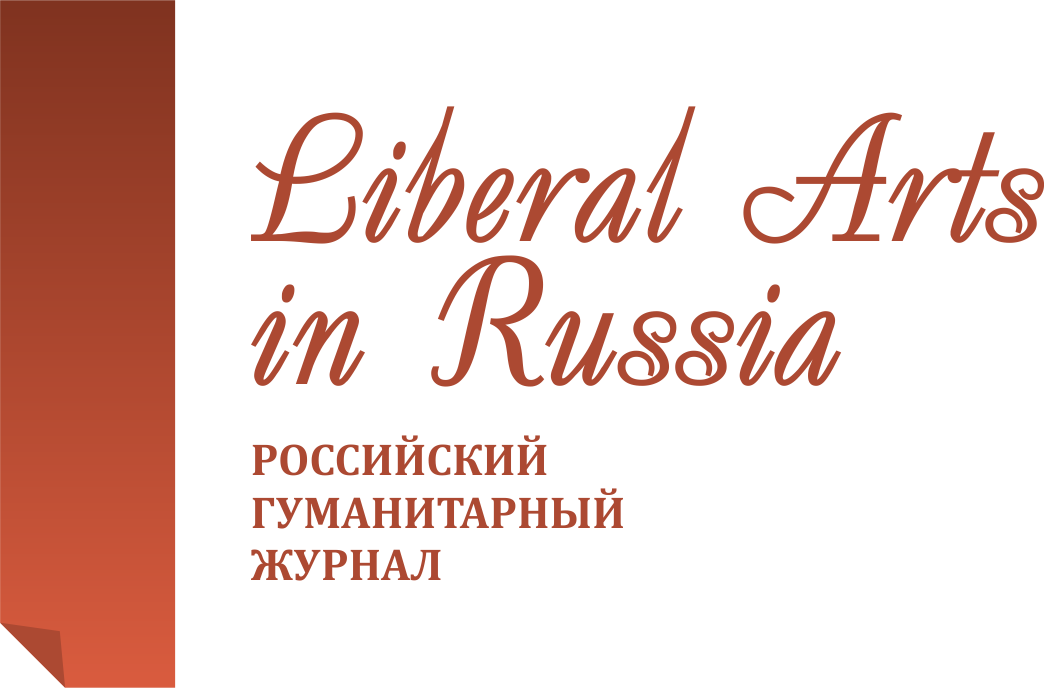The Functions of the Dialogue in a Fiction Text
Liberal Arts in Russia. 2015. Vol. 4. No. 1. Pp. 34-42.
Get the full text (Russian) Email: galiya.khisamova@yandex.ruAbstract
The dialogue being a form of communication represents a dynamic structure. Speech communication analysis is mostly based on the material of spontaneous dialogue, but it can be analyzed on the material of a fiction dialogue as well. The fiction dialogue appears to be the product of one of the most complicated types of communication. It refers to fiction and literature and its subjects are the author, the readers and the characters. The functional-communicative approach in the analysis of a fiction dialogue reveals new possibilities for the communicative analysis of the communicative behavior of a certain character. The article deals with the description of the dialogue function in the stories by V. M. Shukshin. The specificity of the artistic dialogues is defined by its aesthetic function. The dramatic category becomes the principle of V. M. Shukshin’s poetics. Verbal and visual form created by the writer is a peculiarity of his artistic system. Polyfunctionality of the dialogues in Shukshin’s stories determines his dominant, text forming function. The dialogue in this case possesses a high level of informativeness: it moves the action, develops the plot, exposes the interrelation between the characters thus defining their behaviour. The test of the characters in Shukshin’s works is made by means of dialogues, that’s why the characterological function is very important. It represents an essential feature of the writer’s prose style. The dialogue is a means of modeling the “speech mask” that reflects the peculiarities of speech behavior of Shukshin’s characters. In Shukshin’s stories, the dialogue performs an evaluating function as it gives the opportunity to deliver some evaluating positions. The evaluating position is the perception and evaluation of the depicted objects (characters, situations, actions) by the author and actors. It’s the dialogues that expose the Shukshin’s characters’ peculiarities of the worldview, ethics and values.
Keywords
- • function
- • the dialogue
- • the fiction text
- • character
- • short stories by V. M. Shukshin
References
- Belaya G. A. Khudozhestvennyi mir sovremennoi prozy [Fiction World of Modern Prose]. Moscow: Nauka, 1983.
- Vvedenie v literaturovedenie [Introduction to Literary Studies]. Ed. L. V. Chernets. Moscow: Vysshaya shkola, 2006.
- Gatinskaya N. V. Logicheskii analiz yazyka. Kontseptual'nye polya igry. Moscow: Indrik, 2006. Pp. 255–261.
- Durov A. A. Tekst: uzory kovra. Stavropol': Izd-vo Stavropol'skogo universiteta, 1999. Pp. 134–143.
- Zhilina N. P. Novellistika V. Shukshina v literaturnom protsesse 60–70-kh godov XX veka [V. Shukshin’s Short Stories in the Literary Process of the 60-70ies of 20th Century]. Kaliningrad, 2000.
- Izotova N. V. Logicheskii analiz yazyka. Mono-, dia-, polilog v raznykh yazykakh i kul'turakh. Moscow: Indrik, 2010. Pp. 162–173.
- Kozlova S. M. Poetika rasskazov V. M. Shukshina [Poetics of V. M. Shukshin’s Stories]. Barnaul: Izd-vo Altaiskogo universiteta, 1993.
- Mikhailov N. N. Teoriya khudozhestvennogo teksta [The Theory of Literary Text]. Moscow: Academa, 2006.
- Polishchuk G. G. Problemy rechevoi kommunikatsii. Saratov: Izd-vo Saratovskogo universiteta, 2000. Pp. 152–157.
- Proza V. M. Shukshina kak lingvokul'turnyi fenomen 60–70-kh godov [Prose of V. M. Shukshin as a Linguistic-Cultural Phenomenon of 60-70ies]. Barnaul: Izd-vo Altaiskogo universiteta, 1997.
- Sergeeva L. A., Khisamova G. G., Shaimiev V. A. Khudozhestvennyi tekst; funktsional'no-kommunikativnyi aspekt issledovaniya. Monografiya [Fiction Text; Functional-Communicative Aspect of Research. Monograph]. Moscow: Izd-vo MGOU, 2014. Pp. 5–59.
- Tvorchestvo V. M. Shukshina v sovremennom mire. Estetika. Dialog kul'tur. Poetika. Interpretatsiya [The Work of V. M. Shukshin in the Modern World. Aesthetics. Dialogue of cultures. Poetics. Interpretation]. Barnaul: Izd-vo Altaiskogo universiteta, 1999.
- Tvorchestvo V. M. Shukshina: entsiklopedicheskii slovar'-spravochnik [The Work of V. M. Shukshin: Encyclopedic Handbook-Dictionary]. Barnaul: Izd-vo Altaiskogo universiteta, 2004. Vol. 1.
- Khisamova G. G. Dialog kak komponent khudozhestvennogo teksta (na materiale khudozhestvennoi prozy V. M. Shukshina. Monograph). Monografiya [Dialogue as a Component of Literary Text (on the Material of V. M. Shukshin’s Fiction)]. Moscow: Izd-vo MPGU, 2007.
- Khisamova G. G. Novoe v teorii i praktike opisaniya i prepodavaniya russkogo yazyka. Varshava: Artico, 2004. Pp. 356–361.
- Khisamova G. G. Studia Rossica Posnaniensia. Vol. XXXI. 2003. Pp. 169–175.
- Khisamova G. G. Russkaya rech'. 2004. No. 4. Pp. 51–55.
- Khisamova G. G. Filologicheskie nauki. 2008. No. 4. Pp. 100–110.
- Churilina L. N. Leksicheskaya struktura khudozhestvennogo teksta: printsip antropotsentricheskogo issledovaniya [The Lexical Structure of a Literary Text: the Principle of Human-Centered Study]. Saint Petersburg: Izd-vo RGPU im. A. I. Gertsena, 2002. 284 pp.
- Shukshin V. M. Sobranie sochinenii v shesti tomakh [Collected Works in Six Volumes]. Moscow: Molodaya gvardiya, 1992. Vol. 2.
- Shukshin V. M. Sobranie sochinenii v shesti tomakh [Collected Works in Six Volumes]. Moscow: Molodaya gvardiya, 1993. Vol. 3.
- Wilson R. Rawdon. In Palamedes` shadow. Boston, 1990.
